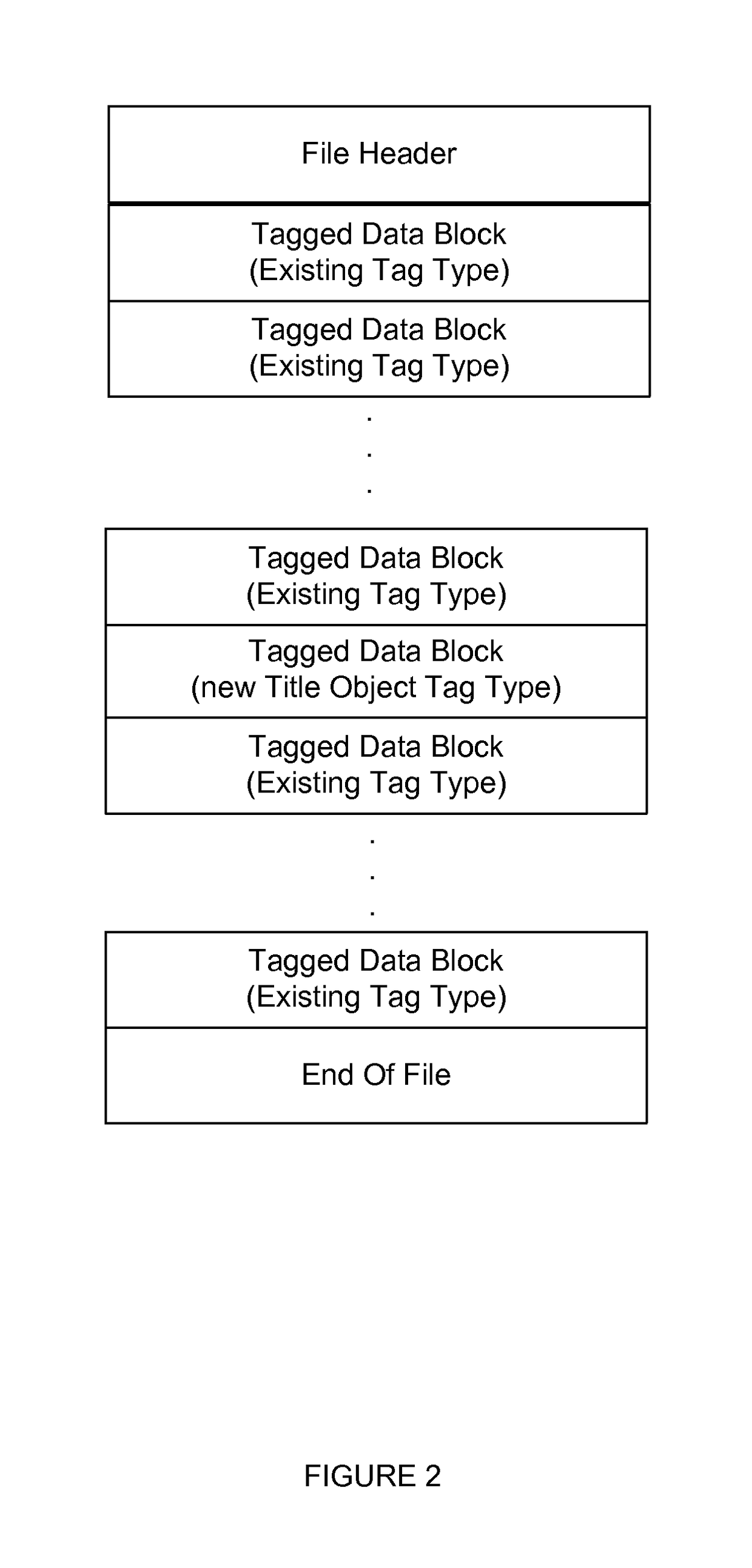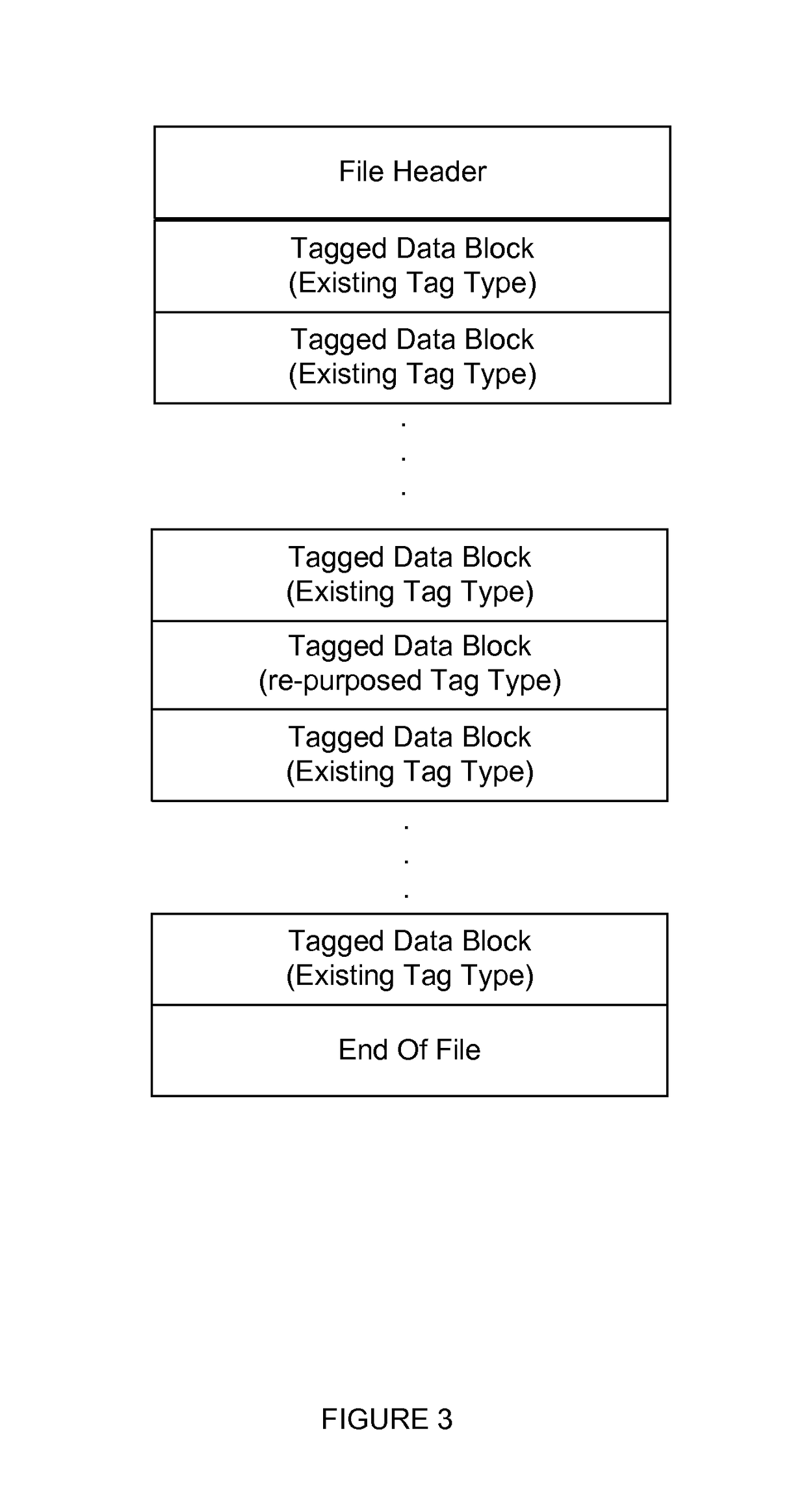Title materials embedded within media formats and related applications
a technology of title materials and media formats, applied in the field of title materials embedded within media formats and related applications, to achieve the effect of facilitating the presentation of digital content to users and facilitating the redemption of rights
- Summary
- Abstract
- Description
- Claims
- Application Information
AI Technical Summary
Benefits of technology
Problems solved by technology
Method used
Image
Examples
first embodiment
[0099]The JFIF format, as previously described and depicted in FIG. 5, is made up of marked segments of data (5100 through 5500). One such segment type is the COM, or “comment” segment. This segment was included in the data format design to allow incorporation of arbitrary text into the image data for the purpose of describing the image, noting the ownership of the image, or for any other purpose. In a first embodiment, the title material's data is encoded into text form, using methods well known to those having skill in the art, such as specifying some or all data bytes as hexadecimal values in the form of ASCII strings, and included as an image comment segment, as shown in FIG. 7.
[0100]In FIG. 7 the SOI segment (7100), APP0-JFIF segment (7200), and any optional APP0-JFXX segment (7300) are followed by a COM segment (7400) containing the encoded title material(s). This is followed by the image data (7500) and EOI segments (7600). Software which is not title aware will not be preven...
second embodiment
[0137]In a second embodiment, title materials may be identified using a unique identifier value associated with the title materials. In some embodiments, the unique identifier may be a Microsoft-compatible GUID. In other embodiments, the unique identifier may be a DCE-compatible UUID. The selection of the specific unique ID format will vary from embodiment to embodiment. Title materials may be associated with one unique ID, or may be associated with a plurality of unique IDs.
third embodiment
[0138].In a third embodiment, title materials may be identified using one or more content tags associated with or embedded within content. In some embodiments, a specific content tag is associated with title materials, such as in the descriptive HTML surrounding a title in a web page, or a descriptive tag within a specified file format (such as the MP3 file format, as described herein). Similarly, a content tag may be associated with title materials when the title materials are stored within or referenced by an XML storage mechanism. The content tag may be stored separately from the title materials, and may be stored using a different storage mechanism such as a database or directory service.
PUM
 Login to View More
Login to View More Abstract
Description
Claims
Application Information
 Login to View More
Login to View More - R&D
- Intellectual Property
- Life Sciences
- Materials
- Tech Scout
- Unparalleled Data Quality
- Higher Quality Content
- 60% Fewer Hallucinations
Browse by: Latest US Patents, China's latest patents, Technical Efficacy Thesaurus, Application Domain, Technology Topic, Popular Technical Reports.
© 2025 PatSnap. All rights reserved.Legal|Privacy policy|Modern Slavery Act Transparency Statement|Sitemap|About US| Contact US: help@patsnap.com



